SaaS adoption has skyrocketed, with organizations and enterprises shifting their business applications to the cloud and adopting subscription-based services. Take Microsoft, for example.
They were amongst the first to shift to subscription cloud modeling with the introduction of Microsoft Office 365. This let them crack on the piracy issues they have been facing since years, got them more revenue, pushed updates frequently, and quickly addressed customer issues related to their application.
All these benefits are credited to the flexible architecture of SaaS that allows enterprises to adopt a holistic approach to addressing their customer requirements. Keeping this in mind, let us move ahead to know more about SaaS, types of architecture, and some of the benefits it has to offer for your business.
What is SaaS?
Software-as-a-Service (SaaS) is a web-based software application delivered to the end-users through the internet. Instead of installing and maintaining software on the device, SaaS offers a subscription-based model where users can easily access the entire application and its IT infrastructure. SaaS providers maintain application servers, database layers, and code base that makes up the entire application.
Owing to the model’s flexible nature, enterprises across the globe have reported that they use an average of 80 SaaS applications. Amongst them, 21 are custom SaaS applications. With no extra responsibility for maintaining the application, SaaS users have reported that this form of an application balances security and productivity. And with ‘flexible workplace’ becoming the new norm, employees prefer cloud solutions that provide easier accessibility.
Key SaaS components:
The core components of an application distinguish one type of application from the other. Here are some of the core components that every SaaS application would have.
- A unique infrastructure – One of the benefits of using a SaaS architecture is its customizable infrastructure that can be scaled up or down, depending on business requirements. For instance, customers can decide which components would benefit their business and can pay only when needed. Once the paid period is over, customers would return to their previous infrastructure model. SaaS users buy their software on a billing system on a month-to-month or yearly basis. Their requirements can scale up or down depending on their business demands and customer demand. Therefore, having a customizable infrastructure is a must.
- Subscription-based billing model – The core essence of a SaaS application is the high availability of the software as a service. This service is extended on a flexible billing cycle that allows clients and business users to take full advantage of whatever they want, and as much as they want.
- A CRM system – A Customer Relationship Management system is what distinguishes a SaaS application from other applications. Since SaaS offers a common platform for multiple tenants, it needs a single repository for multiple customer accounts and their account details for management purposes.
- Automated provisioning – Automated provisioning of a SaaS application enables an easy customer onboarding process to establish a service delivery of the cloud-based application. Automation improves operational efficiency for independent software vendors (ISVs) as necessary framework-related updates are quickly pushed to subscribers. Moreover, it takes away the load of managing release schedules of deployments, patches, or upgrades.
- Support and Analytics – A SaaS application’s customer support and analytics module provides the toolkit to manage the platform and check metrics. While it allows SaaS providers to meet client expectations, business providers can improve customer experience and meet the market demands.
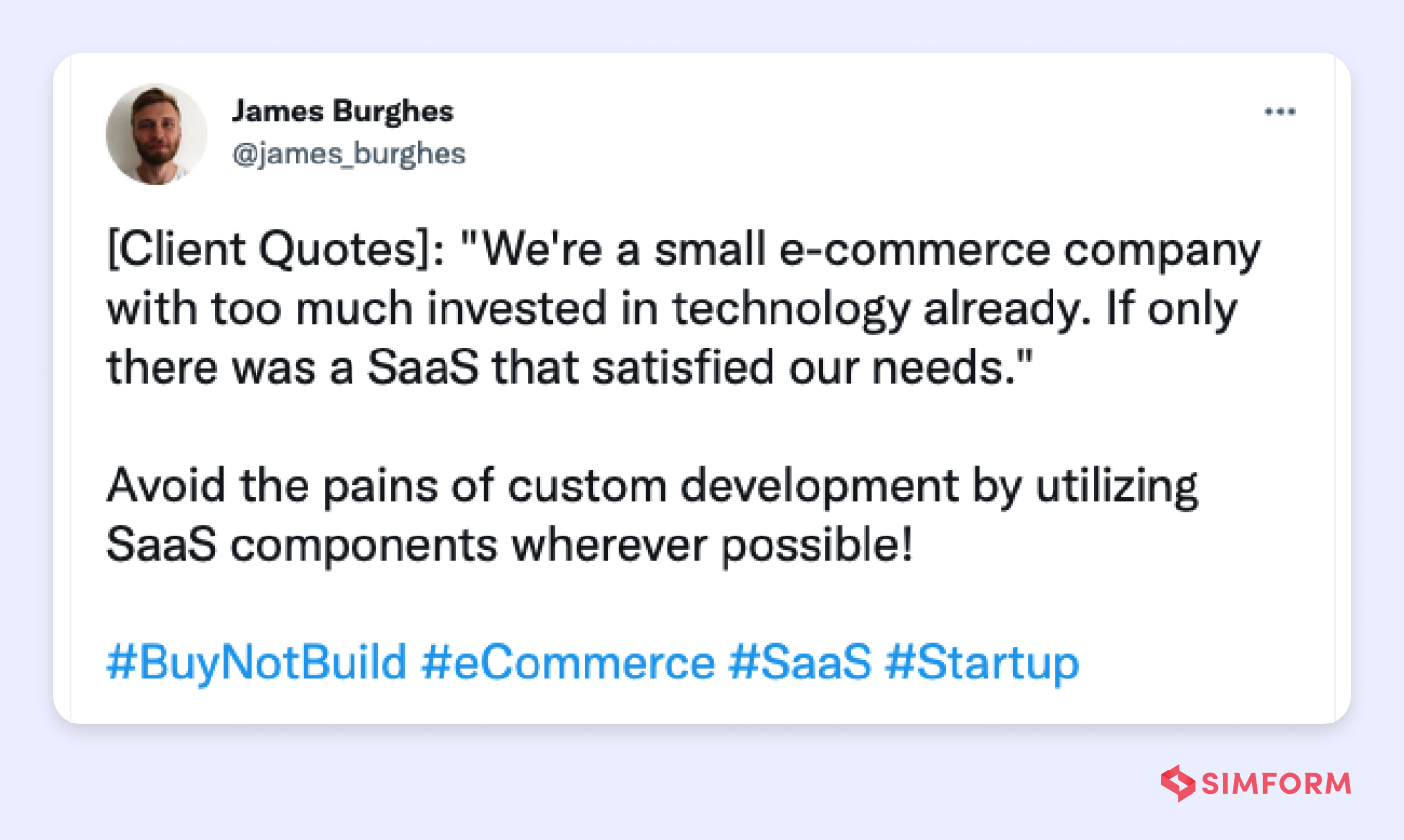
Types of architecture for SaaS applications
The rise and popularity of SaaS applications seem to be unfaltering. Even during the physical restrictions of the pandemic, it was SaaS applications that enabled enterprises and their employees to work remotely. In fact, IDC has reported that the pandemic did not impact 22.5% of organizations’ SaaS expenditure, while more than 30% of global organizations increased their SaaS expenditure by an average of 10-20%.
So what exactly makes SaaS applications so unique?
The answer to this question lies in its core built – the architecture.
SaaS architecture is sui generis. However, it can be divided into categories based on industry, software category, or tenancy model.
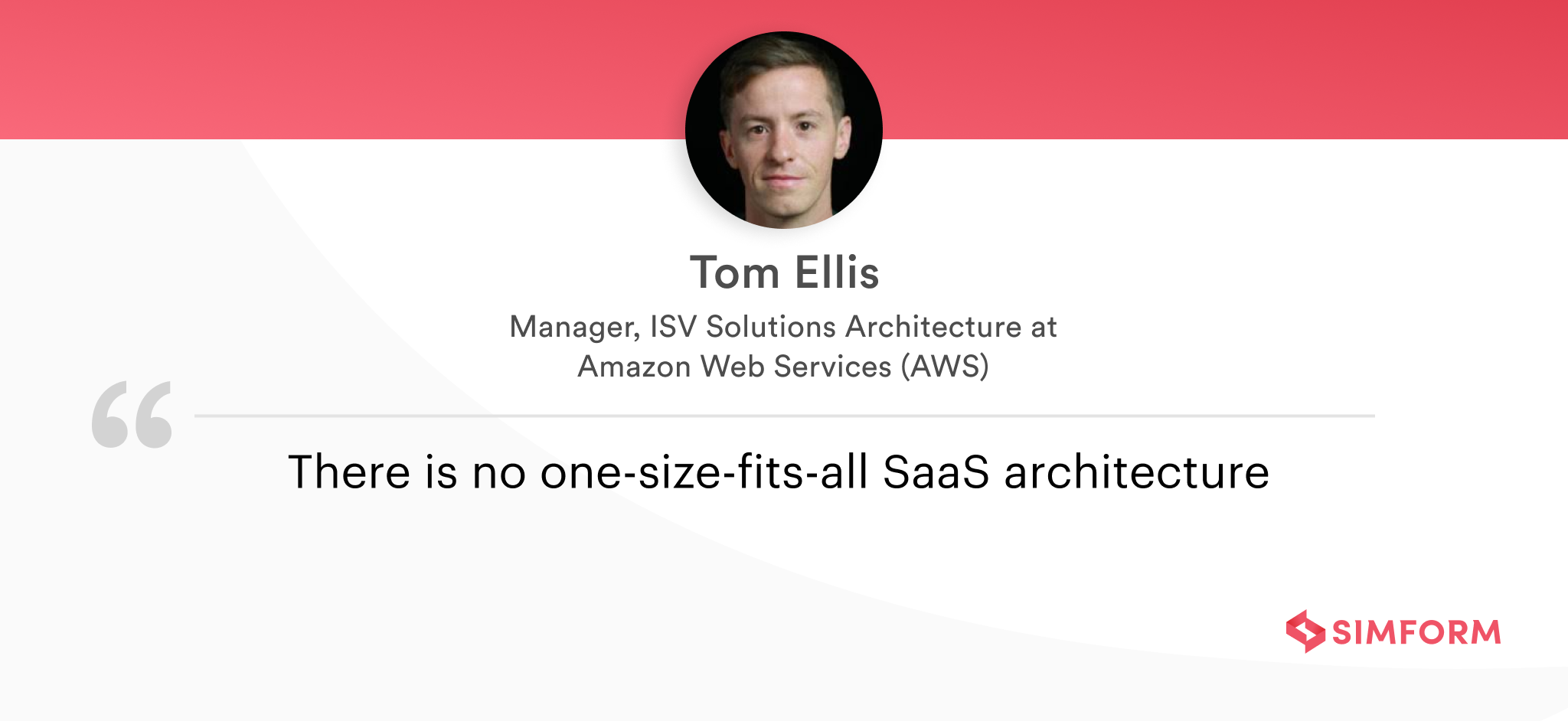
Broad categories: Based on industry and functionality coverage
- Vertical SaaS
A vertical SaaS is a variety of SaaS architecture created for specific industry verticals. These industries include healthcare, real estate, agriculture, finance, logistics, retail, and many more. Fractal’s State of Vertical SaaS 2021 reports that vertical SaaS has grown by 28% since 2020.
While it might seem to be a narrower approach to creating SaaS applications, it does serve the broader needs of a single industry. Offering various functionalities and services for a single industry appears more profitable than providing a single functionality since an institution or organization can depend on a single application. While there are chances of vendor dependency, it is up to the decision-makers to weigh the pros and cons based on their requirements, budget, and market demands.
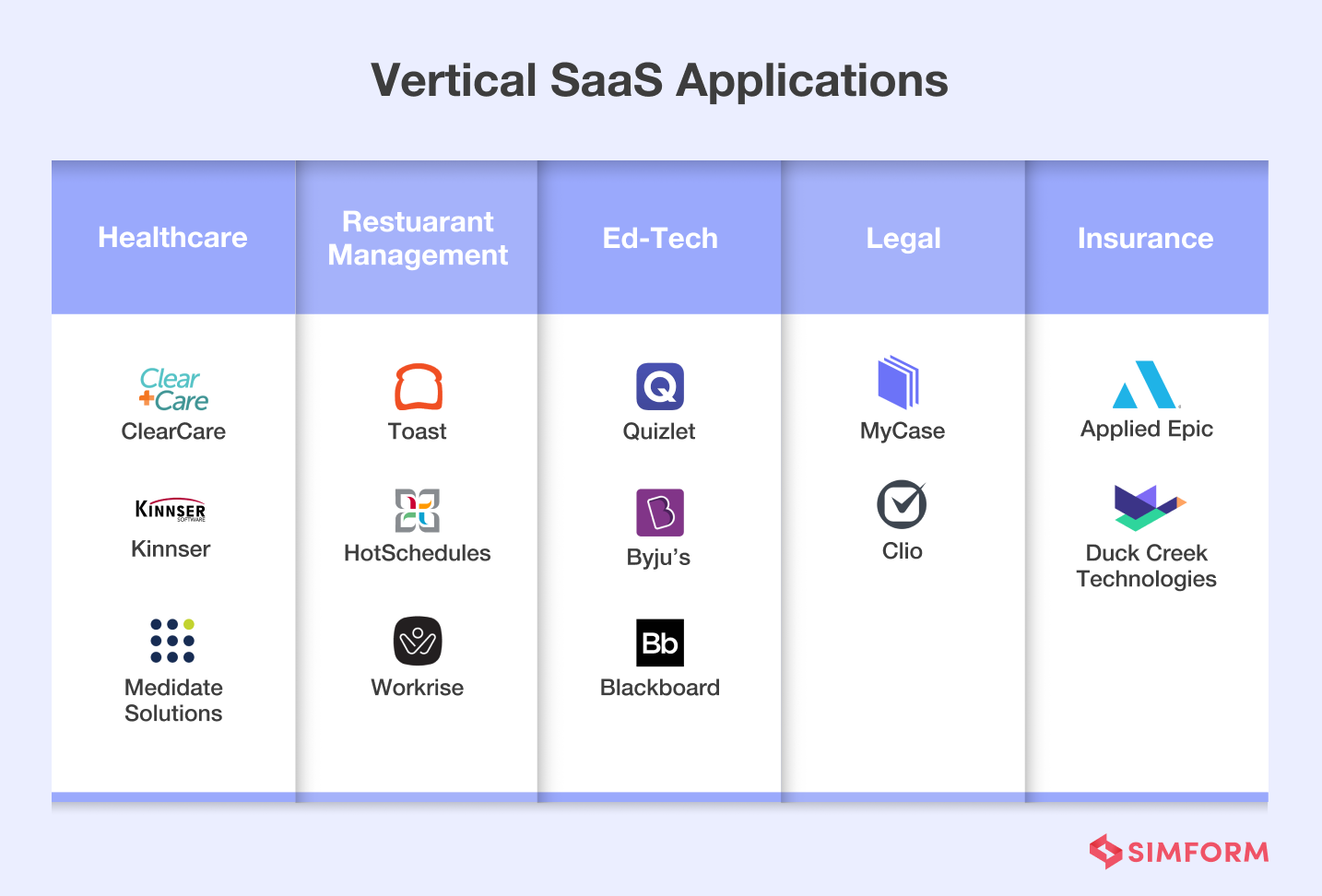
- Horizontal SaaS
Horizontal SaaS applications focus more on functionality than on industry requirements. This type of SaaS architecture focuses on a software category, irrespective of the clients’ industry. For instance, marketing, sales, and communication applications are used across all industries, and a SaaS application offering these functionalities can meet specific business requirements.
Since this type of SaaS application is known for a single functionality or service, enterprises can be specific about their conditions and choose the app they need the most. But on the other hand, it also means that the same enterprises would be forced to invest in multiple SaaS applications to meet their demands.

SaaS tenancy models: Based on component shareability
The tenancy models are based on the fundamental components of a SaaS application – the tenants. Every single customer utilizing a SaaS platform is considered a tenant, and they get their access rights by paying a subscription fee.
Do note that your tenancy model does not affect your application performance. Instead, it is to meet consumer demands, provide flexible solutions for developers, set the cost, and maintain operational complexities.
- Single-Tenant Architecture
A single-tenant architecture serves a single customer who is paying for that software service. It means, the tenant gets their dedicated software instance, a single infrastructure, server, and database. The architecture greatly benefits buyers since they don’t have to share their database resources with other customers. Moreover, buyers can even customize the software according to their business needs and scale up or down whenever they want.
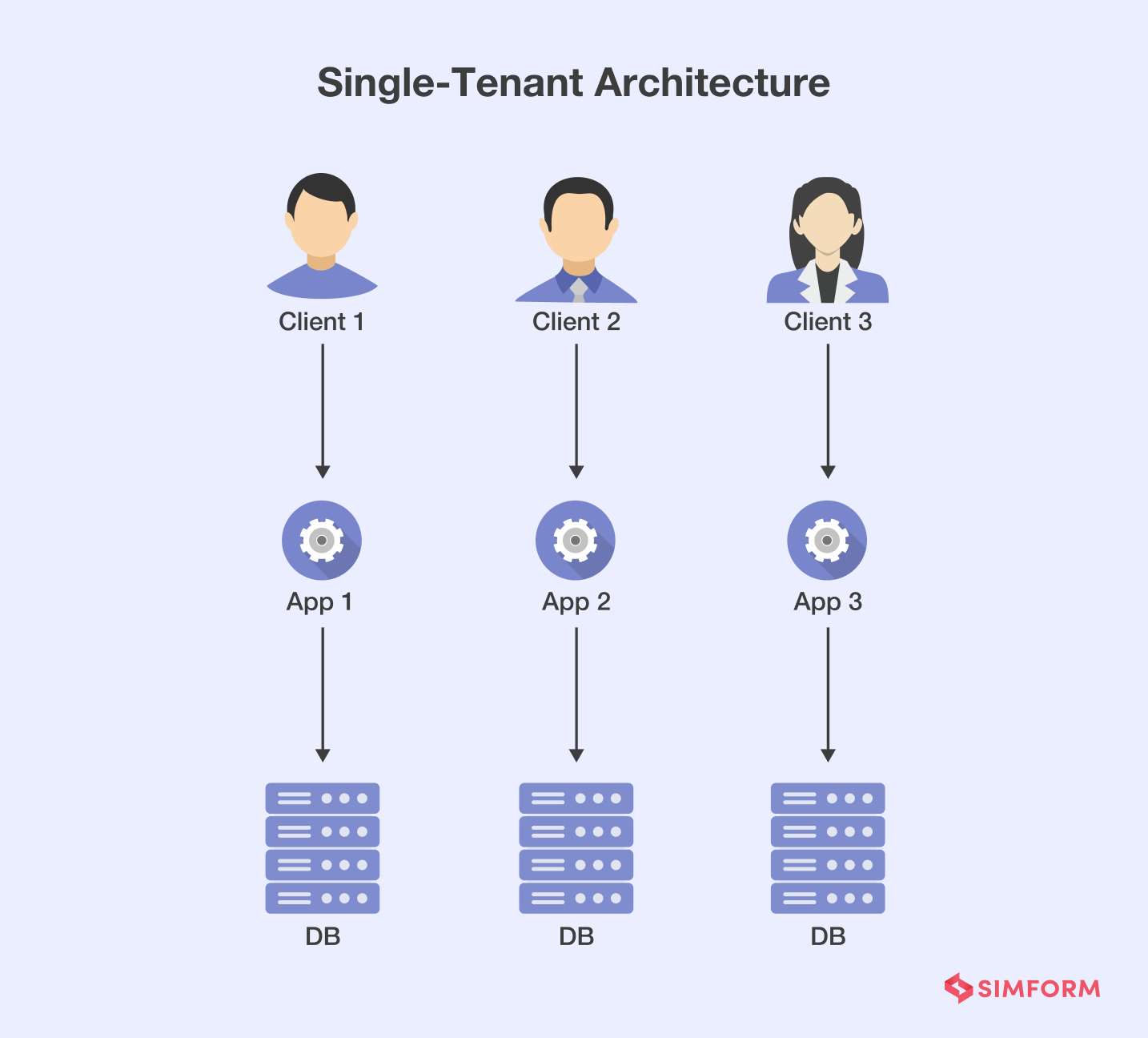
For example, Oracle Cloud is a SaaS that utilizes a single-tenant architecture to provide a private cloud SaaS environment. The Cloud services giant hosts separate compartments with isolated resources and granular access control. This allows the customers to have a different version of the same SaaS product and even grants access to customize the app as per business needs.
- Multi-Tenant Architecture
The moment we talk about SaaS, many simply assume that the underlying architecture is a multi-tenant one. Well, that’s not true!
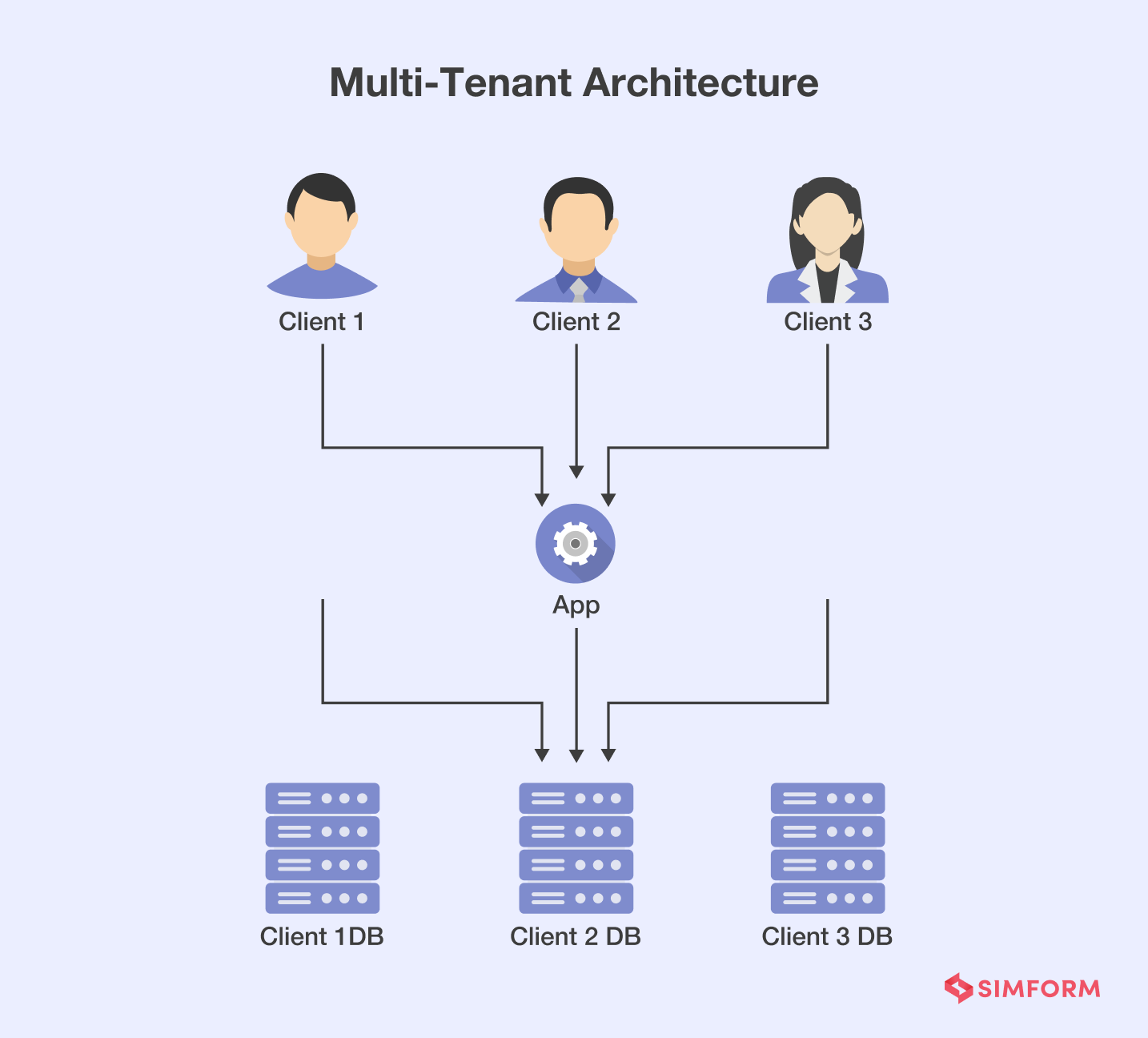
Multi-tenant architecture is one of the most preferred types of architecture while designing a SaaS application because of its core characteristics. By definition, every single instance of this SaaS model serves more than one tenant. This means, all the clients share a common database and application information – with the exception that every tenant’s data are secured.
Google Workspace, also formerly known as G Suite, is a perfect example of a multi-tenant SaaS architecture. Several tenants have access to a single application over the internet. Tenants utilize the common database of Google Cloud to access their free 15GB of data. But while the resources are shared, all personal information of clients is secured and stored separately to maintain the highest levels of privacy and data security.
- Mixed-Tenant Architecture
Unlike a single or a multi-tenancy where the boundaries and functionalities are laid out, a mixed tenant is slightly different.
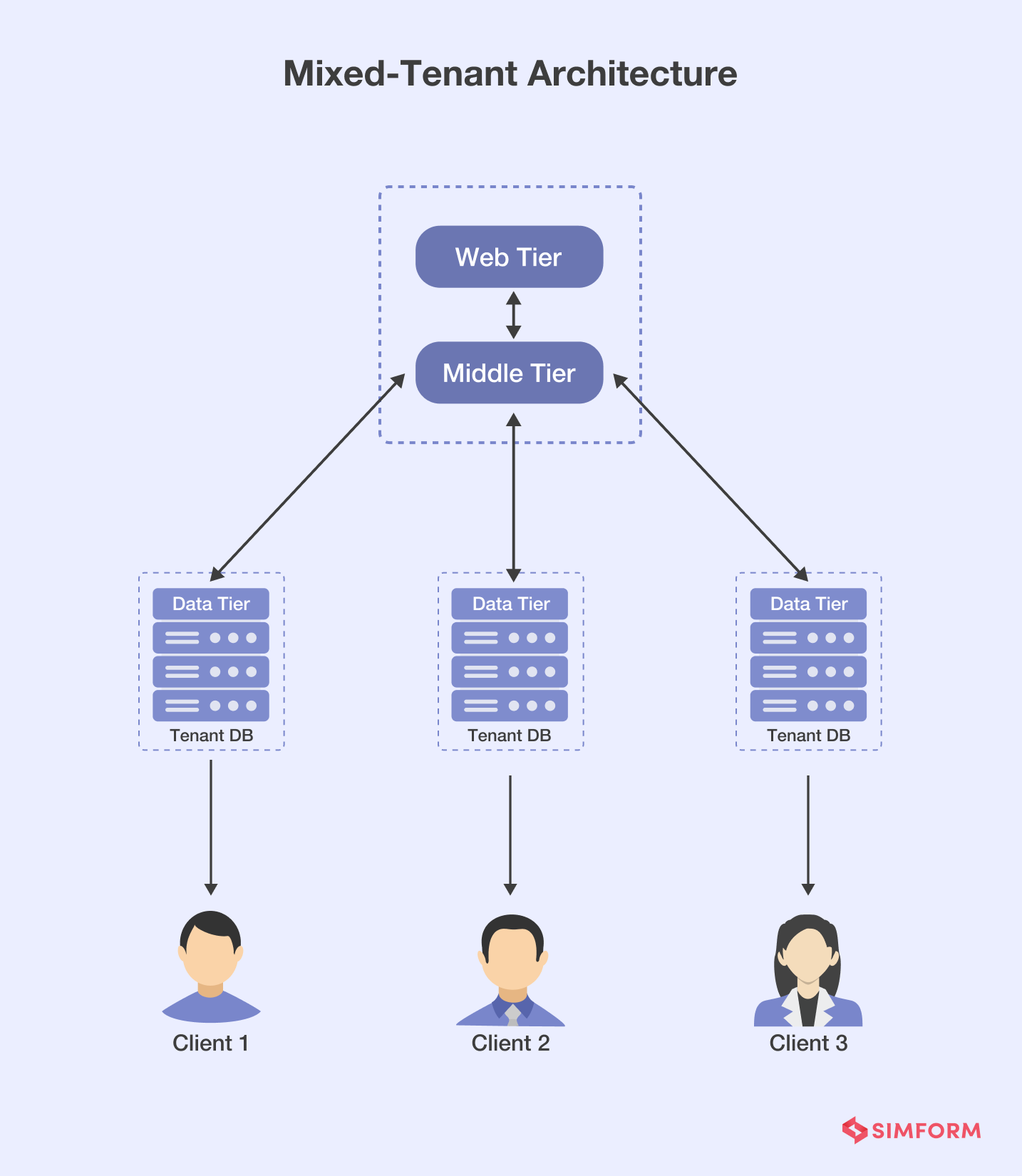
Imagine a situation where a tenant is utilizing resources from a shared infrastructure. But specific business requirements force them to have one or two dedicated components. It can be the database, instances, or some other combination of components, while utilizing the shared infrastructure. This is where a mixed-tenant architecture comes in.
Within this model, one or two parts of the application are dedicated to each tenant, while the rest of the components are shared between all the tenants.
Get in touch with our in-house Software experts
Models of multi-tenant architecture
There’s no doubt that multi-tenant architecture is a popular choice of architecture when someone thinks of Software-as-a-Service. Why shouldn’t it be?
- It is a cost-effective architecture that gives more flexibility for customization.
- It provides a great onboarding experience for new customers.
- Consistency is easy to maintain.
- Provides a convenient resource utilization solution, and much more.
If you have read it this far, you must remember I mentioned earlier that your tenancy model does not affect application performance but helps maintain operational complexities.
Now here’s the deal…
If you are about to choose the multi-tenant architecture for your SaaS, there are four delivery models you will have to consider while designing it.
1. Database per tenant
This is where you must be thinking, “If we were to design an architecture with a single database per tenant, then a single-tenant architecture would have been better”.
Don’t jump the gun yet.
In this model, a tenant does get their own database, however, these databases in the same resource groups are divisible into flexible pools. This means that SaaS vendors can choose to move the databases between these pools for better resource allocation and optimization. With this model, vendors can get the advantage of scaling their app tiers vertically or horizontally.
2. Single multi-tenant database
Similar to the multi-tenant architecture, this model simply consists of multiple tenant identifier columns within the database. Therefore, apart from the database, the storage and compute resources are shared by all the users.
If you choose this model, do keep in mind that while it lowers the cost per tenant, it can affect the service performance for other tenants. For instance, if a single tenant workload consumes too much storage and computing resources, then the performance for other tenants would slow down drastically.
3. Sharded multi-tenant database
Sharding a database has always been a common practice to create an efficient application for improving operational efficiency and performance. With a growing workload on a multi-tenant database, sharding splits tenant data and stores it across multiple databases. Furthermore, the same sharded databases can be moved into flexible pools to enhance operational management and scalability.
4. Hybrid sharded multi-tenant database
A hybrid sharded multi-tenant database can be defined as a model where the vendor has the flexibility to move tenants or a group of tenants into dedicated or sharded databases. Similar to a sharded database in a multi-tenant architecture, a hybrid model ensures that groups of tenants get necessary (yet contrasting) accessibility to resources.
For instance, a vendor might provide free trials with limited resource accessibility while premium subscribers can have full access to the application. This is when the model comes in handy. The trial tenants can be moved into sharded databases with limited resources, and the premium tenants can have full access to a dedicated database.
Why choose SaaS Architecture?
A survey revealed that SaaS applications make up 70% of a company’s total software usage. This means that the popularity of SaaS is growing, and the demand is here to stay for a long time. But apart from this, what makes SaaS architecture distinct that enterprises and customers are making it their first preference?
Let’s look at some of the benefits you can expect from SaaS:
SaaS Customer benefits:
- Offers reliable digital services over the internet.
- Provides a certain degree of flexibility for customization and maintenance.
- An elastic billing and subscription policy.
- Cost-efficient software services compared to traditional software licenses.
- Lets customers activate or disable services as per their convenience.
SaaS Business benefits:
- Offers scalable services to a global customer base.
- Eliminates maintenance and test costs.
- Vendors push updates quickly.
- Reduces time to market a product.
- A public cloud lowers maintenance and infrastructure costs.
Pick your SaaS architecture
Achieving the maximum business goals has always been the first priority for enterprises and organizations all over the world. It is a universal sentiment, and apparently, SaaS has been reported as the “most important software” in achieving those goals.
But, as you decide to choose Software-as-a-Service as your primary architecture, here are some questions you should ask yourself before you pick the appropriate architecture model –
- For what services are the customers supposed to pay?
- Would all your customers share a common database and application hardware?
- Do your customers need a different database but can share a similar architecture?
- Are your customers seeking an isolated application and database in SaaS?
- Do your customers need your cloud services?
Asking these questions as you go ahead to design your SaaS architecture would give you more clarity on what your customers are actually looking for. The best way to go about this is to fill in the gaps your customers have and get your business ahead in the SaaS market.
Want to know more about SaaS and its architectural designs?